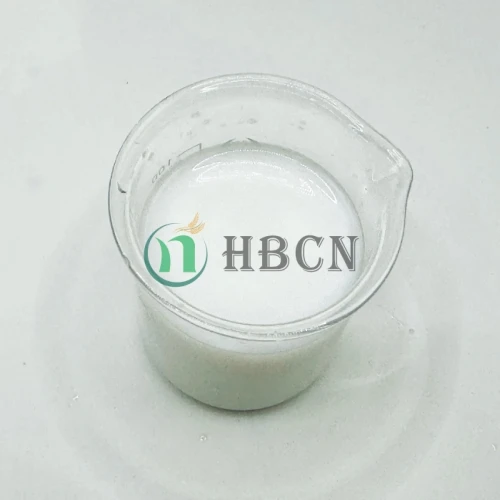
Nov . 21, 2024 07:39 Back to list
mancozeb penconazole or flutriafol products
The Role of Mancozeb, Penconazole, and Flutriafol in Crop Protection
In the ever-evolving world of agricultural practices, the pursuit of effective crop protection has led to the development and application of various fungicides. Among them, Mancozeb, Penconazole, and Flutriafol stand out due to their unique properties, effectiveness against pathogens, and the roles they play in ensuring healthy plant growth and productivity. This article will explore these three critical fungicides, outlining their uses, benefits, and impacts on sustainable agriculture.
Mancozeb Multifaceted Fungicide
Mancozeb is a broad-spectrum fungicide belonging to the dithiocarbamate family. It is commonly used to protect a wide range of crops from various fungal diseases, including blight, mildew, and rust. The mechanism of action of Mancozeb involves inhibiting the cellular respiration of fungi, which effectively reduces their growth and spore production. One of the key advantages of Mancozeb is its ability to act as a preventative measure rather than a curative one. This means that it is most effective when applied before the onset of disease, making it essential for integrated pest management strategies.
Additionally, Mancozeb is often combined with other fungicides to enhance efficacy and broaden the spectrum of disease control. Its relatively low toxicity to humans and wildlife, along with its rapid degradation in the environment, positions it as a more sustainable choice for farmers adhering to environmentally friendly practices.
Penconazole Targeted Action Against Specific Fungi
Penconazole is a triazole fungicide that is particularly effective against certain diseases, particularly those caused by ascomycetes and basidiomycetes. This systemic fungicide works by inhibiting ergosterol biosynthesis, a vital component of fungal cell membranes. By disrupting this biosynthesis, Penconazole effectively prevents fungal growth and reproduction.
The targeted action of Penconazole makes it suitable for use on a variety of crops, including fruits, vegetables, and ornamental plants. Farmers appreciate Penconazole for its relatively long residual effect, which means that a single application can protect crops for an extended period. Furthermore, resistance management is crucial in modern agriculture, and Penconazole’s unique mechanism of action makes it a valuable part of rotation plans for fungicide application, reducing the likelihood of resistance development among fungal populations.
mancozeb penconazole or flutriafol products

Flutriafol Versatile and Efficient
Flutriafol is another member of the triazole family, known for its broad-spectrum activity and efficiency against a range of fungal diseases, particularly leafspot and root rot. Similar to Penconazole, Flutriafol works by inhibiting ergosterol biosynthesis, but its versatility allows it to be used across various crops, including cereals, fruits, and vegetables.
A significant benefit of Flutriafol is its systemic action; it is absorbed by plant roots and translocated throughout the plant, providing comprehensive protection. Moreover, Flutriafol has demonstrated excellent residual activity, ensuring prolonged disease control while minimizing the need for frequent applications.
Farmers also appreciate that Flutriafol displays low toxicity to non-target organisms, which aligns with the principles of integrated pest management and promotes biodiversity on and around farmland.
Conclusion A Balanced Approach to Crop Protection
The integration of Mancozeb, Penconazole, and Flutriafol into agricultural practices represents a balanced approach to crop protection. These fungicides, with their unique mechanisms and effectiveness, contribute significantly to reducing crop losses due to fungal pathogens. However, it is essential for farmers to adopt sustainable practices by implementing integrated pest management strategies that incorporate rotation and combination of fungicides, thereby minimizing the risk of resistance and environmental impact.
As agriculture continues to innovate and adapt to changing climatic conditions and pest pressures, the responsible use of these fungicides will be crucial in securing food production while safeguarding the environment for future generations.
-
Azoxystrobin: Broad-Spectrum Fungicide Solutions
NewsAug.11,2025
-
Best EPA Boscalid: Superior Crop Fungicide for Max Yields
NewsAug.11,2025
-
Best Willowood Imidacloprid: Superior Pest Control Solutions
NewsAug.10,2025
-
Best EPA Boscalid Fungicide: Ultimate Crop Protection
NewsAug.09,2025
-
Cyprodinil Fungicide: Broad-Spectrum Crop Protection
NewsAug.08,2025
-
Tembotrione Herbicide: Advanced 8% OD for Broad Spectrum
NewsAug.07,2025
